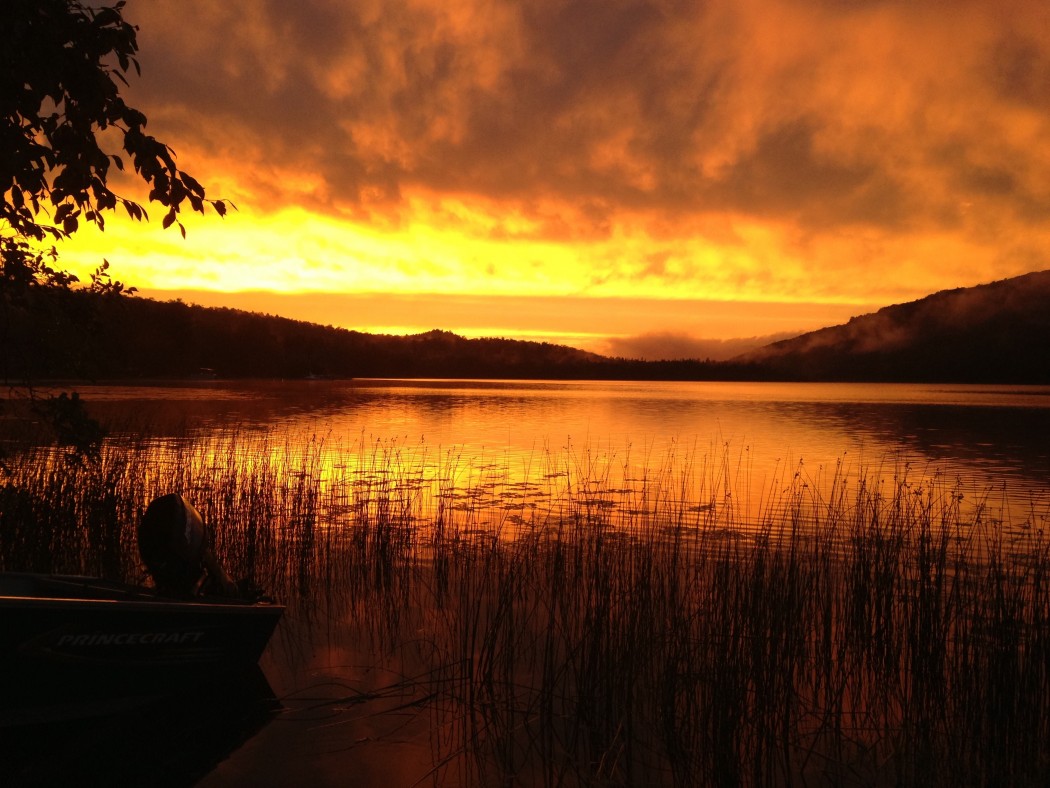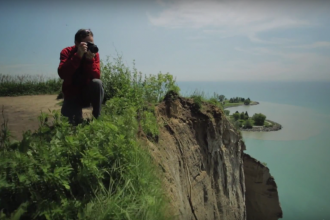Few things are as inspiring as the sunset. And few things are photographed so often and so poorly. Getting a great sunset image isn’t always easy. Yes, you might get lucky and snap off an amazing shot with your point-and-shoot, but as with all things photography, you can always make your shots better. Here are some tips to help you capture those golden moments at your cottage.
Planning
One of the greatest ways to improve your photography is through planning. If you have an idea of what you want before you start, the results are generally better. If you know when and where the sun is going to meet the horizon, you can spend the time composing your shot properly. Environment Canada is a great place to find the sunrise and sunset times. It’s always good to arrive at your location an hour or so before the sun goes down so you aren’t rushed. If you want to know exactly where the sun will go down, check out the PhotoTimes+ app. It will tell you where on the horizon the sun it going to set any day of the year.
Proper Exposure
This is by far the trickiest part of shooting a sunset. The brightness of the sun combined with the darkening sky will most likely confuse your camera, so shooting in full automatic will result in under- or over-exposed images. There are a number of ways to deal with this, depending upon your comfort level with your camera. Bracketing (usually marked with a +/- on your camera) is a great beginner option. Leaving your camera in program mode, bracket to the plus side if your image is too bright, or minus if it’s too dark. Experimentation is key here, so just keep trying. The overall brightness of the scene will continually change as the sun goes down, so keep changing your settings to get what you’re after.
Use a Tripod
If you’re using slow shutter speeds or a long telephoto lens, then a tripod is essential in achieving sharply focused images. Using a tripod is generally good practice whenever shooting landscapes, so if you have one, take it along. If not, get creative with rocks, cars, or any solid object. The steadier your camera is, the better your images will be.
Rule of Thirds
A general rule of photography, the Rule of Thirds applies to composition. It states that you should imagine your image with two equally spaced horizontal lines and two equally spaced vertical lines. These will divide your image into nine equally sized rectangles or squares. Compositional elements should fall along these lines or at the intersections of these lines. This creates tension and is more visually pleasing than having everything centered. In the case of a sunset image, a classic rule of third composition would place the horizon at one of the two horizontal lines and the sun at one of the spots where the vertical lines intersect the horizontal.
Silhouettes
A great way to add interest to your image is to include a silhouette; a tree, a person, a boat, or just about anything in the foreground. Sunset images often suffer from a lack of context, so including a silhouette can help fix this common problem.
Clean your Lens
Nothing reveals just how dirty your lens it like a sunset. Use a lens cloth to wipe your lens clean, or if you’re really desperate, do what the pros do: use a clean cotton t-shirt (I didn’t tell you this!). A sunset image is easily ruined by specks of dust on your lens, so make sure to get rid of them.
Shoot, Shoot, Shoot
Some of the best sunset images can come once the sun has gone below the horizon. The light can create incredible purples and reds, so keep shooting even after the sun has gone down. Try different focal lengths, try focusing on different subjects, keep bracketing, and keep experimenting. Perhaps the greatest thing about digital photography is that shooting more photos doesn’t cost you more money, so keep experimenting to see what works.

























